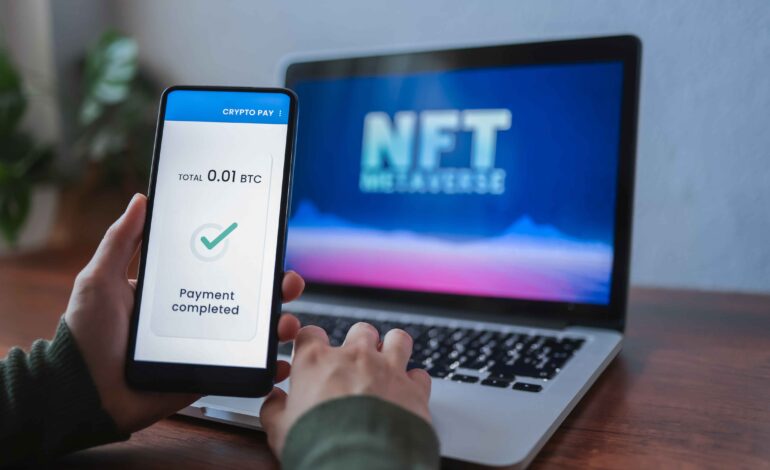Introduction: Why NFT Value is About More Than Hype
Not all NFTs are equal. In a virtual universe of profile pictures, pixel art, and video game tokens, it is important to know how to identify the truly valuable NFTs. Whether you are collecting as an investment, as a hobby, or both, understanding the three pillars of traits, rarity, and utility can help you avoid hype-based purchases and buy NFTs with value for the long-term.
Let’s break down how experienced collectors and savvy investors think about NFTs – so you can do the same.
1. Trait Analysis: What Makes An NFT Special
Every NFT collection has a set of visual or metadata traits that differentiate each NFT item. These traits can include:
-
background colors
-
clothing or accessories
-
facial expressions or emotions
-
unique animations or sounds
-
hidden metadata attributes
For example, in a collection like CryptoPunks, a punk with a VR headset or pipe might be considered much rarer than one with otherwise common attributes. Typically, you use something like Trait Sniper or Rarity Tools to see instantly how rare certain traits are.
Pro Tip: Look for NFTs with interesting combinations of many traits – even if they are not rare individually. Sometimes, a certain aesthetic combination becomes appreciated over time.
2. Rarity: The Mystery of Scarcity
In the world of NFTs, rarity = value. Collections such as Bored Ape Yacht Club or Azuki rank NFTs according to how frequently that trait is present in NFT collections.
The rarity that is important to look for:
-
Absolute rarity: there are very few NFTs with this specific trait.
-
Relative rarity: a unique combination of traits, with no rare traits themselves.
-
Legendary/ 1/1 item: One of a kind NFTs are most often the most valuable.
Most marketplaces will show rarity rankings direct, or you can see rarity rankings for Solana NFTs at RaritySniper or HowRare.is.
3. Utility: The Purpose (Real-World or Digital)
NFT’s that have utility provide more than just art; they also serve a purpose. Examples of utility could include:
-
Access to exclusive communities
-
Play-to-earn gaming advantages
-
Staking tokens to provide passive income
-
Voting on decentralized platforms (e.g. DAO governance)
-
Physical perks that may include merchandise, event tickets, and exclusive access to real estate
Take this collection, VeeFriends by Gary Vee. Each NFT acts as a ticket to a future conference, mentorship opportunities, and VIP access. Therefore the value of the NFT is much greater than the art shown.
Pro tip: always read the project’s whitepaper or roadmap description to get a better sense of future plans. Utility statements don’t mean much if they don’t deliver!
4. Team & Community: Trust Is Value
Communities of engaged NFT enthusiasts and well-matched teams are the glue that holds NFT value together. Look out for red flags:
-
Anonymous or unverified founders
-
No online presence or fake followers
-
Over-hyped marketing without substance
Communities that are dispersed across Discord, X (Twitter), and Telegram, indicates an organic public interest and longer-term value.
5. Historical Performance & Volume
If the NFT is being traded on a platform such as OpenSea or Blur, check transaction volume, trajectory on the floor price, and holder distribution.
-
High volume = confidence in the market
-
Diverse holders = less price manipulation
-
Consistent upward trajectory on floor price = investor interest
CoinMarketRace, OpenSea stats, Nansen.ai all help visualize the data, and track price potential without being overwhelmed.
6. Ecosystem Compatibility
Another aspect of value is real-world/cross-platform utility. NFTs that are interoperable, or can be used across multiple games, platforms, or metaverse environments typically have more perceived and actual utility and value.
As an example, an NFT character that can be used in both Decentraland and The Sandbox will have more value compared to an NFT character locked to one ecosystem. A simple NFT that may act as a membership pass for exclusive events, or has DeFi staking rewards, may maintain long-term utility value beyond mere surface interest.
Ecosystem compatibility changes the intrinsic value of the NFT from a collectible to a utility asset. Always do due diligence on what platforms the NFT is integrated with, and is there utility maintenance or expansion over time.
7. Ecosystem Integration
One of the factors that help to establish an NFT’s value is its real-world or cross-platform utility. NFTs with interoperability—meaning they can be used across different games, platforms, or environments within the metaverse—usually have higher perceived and practical value.
Take for example a character NFT that can be used in both Decentraland and The Sandbox. This NFT has broader appeal, and value, than a character NFT that also cannot access a virtual property on Decentraland or Sandbox.
The same logic applies to NFTs that may perform an additional function, such as an NFT that provides a Membership Pass to members-only events, or NFTs that provide rewards through DeFi staking, in this instance they may retain long-term value above and beyond their aesthetic, or collectible value.
A true example of ecosystem integration takes the NFT from being merely collectible to being a functional asset. Always investigate what platforms the NFT is integrated with, and whether the utility is being expanded over time.
Conclusion: Blend Logic with Intuition
While traits, rarity, and utility give you a structure to assess value, don’t forget to trust your instincts. Often the next blue-chip NFT may not be a #1 rarity, but it may gain traction by way of community hype, large brand support, or innovation.
You won’t find a valuable NFT by “luck;” it will come with research, timing, and an understanding of what really makes an NFT stand out from the digital crowd





